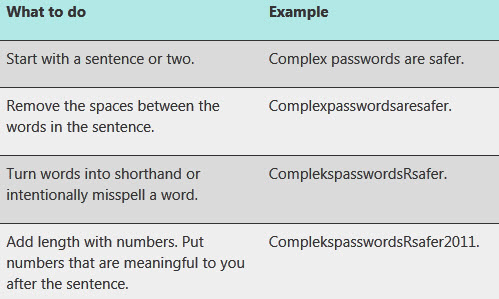Everyone’s talking about online safety and why you should have a membership with a technical computer support company these days, but why?
First things first, understanding how to keep yourself and your family safe online will ensure everyone is protected from scammers, thieves and trolls.
As your kids, grandkids or other loved ones head back to school this fall, their online safety is paramount. Cyberbullies are individuals who will attack children, and even sometimes adults, from their digital devices.
Although these online bullies use several tactics to harm their victims, they commonly will send, post or share negative, fake or otherwise hurtful content about others online to cause embarrassment and humiliation.
Cyberstalking is essentially a synonym for cyberbullying. People who engage in this activity repeatedly use electronic methods to harass, frighten or bully a person or an organization.
Social media is still growing in popularity, and as it does, online bullying continues. Various states have implemented laws and sanctions to try and prevent this type of online behavior, but it still occurs at an alarming rate.
According to a 2015 National Center for Education Statistics and Bureau of Justice Statistics survey, 21 percent of 12-year-old to 18-year-old students nationwide experience bullying.
It’s clear that cyberbullying and cyberstalking are real, terrifying occurrences that threaten children, young adults, parents and seniors. Luckily, people who practice sound online safety behaviors can keep themselves safe from a lot of the harm that occurs on the internet.
What You Can Do
Bullying is a behavior that nearly everyone experiences at some point or another.
Due to this fact, when you are being bullied, either online or face-to-face, it’s often relatively easy to identify the phenomenon. What about when the ones you love are bullied, though?
Identifying cyberbullying among children is often difficult because you may not overhear or see it taking place. Furthermore, since this type of bullying happens online, a child’s teacher might also fail to notice that he or she is being bullied.

That being said, since digital devices communicate electronically, many of the information they transmit becomes permanent and is commonly public if it’s posted or communicated over social media, email or another digital communication method. Due to this fact, one way to recognize cyberbullying is simply to monitor your child’s device and social media pages.
If at any point you see that someone is posting or sharing hurtful, untrue or otherwise damaging content about someone you love, you can talk with the victim about what he or she is experiencing. Once you have a better idea of what’s going on, you can consult others about the occurrence and determine how the situation should be handled fairly and efficiently.
According to the United States government, “When adults respond quickly and consistently to bullying behavior they send the message that it is not acceptable. Research shows this can stop bullying behavior over time.”
Teaching Kids About Bullying
Albeit uncomfortable to think about, your child may fall on either side of cyberbullying. To help your loved one make good choices online, start by reminding him or her that they need to treat everyone they meet in and out of school with respect.
Talk about the importance of thinking before speaking, and discuss how unkind words are never warranted. Another useful technique is to teach your loved one what to do if he or she feels like being mean to someone else.
With this foundation in place, talk to your school-age children or relatives about what to do when bullying occurs. Generally, it’s safest for a kid who’s being bullied to not engage.
Although it’s difficult to stay calm and quiet, this behavior generally deters bullies and leads them to stop joking or being hurtful. As soon as the bully has stopped his or her behavior, the victim can find an adult and ask for help.
In a perfect world, children would always tell adults when they were being bullied. However, kids don’t always feel like they can reach out. For this reason and more, you can encourage your loved one to stand up for others.
Teach them the signs of bullying, and tell him or her that when they see any red flags, they need to talk to a parent, teacher or another adult they trust about their observations. Kindness can also go a long way, so encourage your child to be warm and helpful to the bullied person or group.
Online Safety for Everyone
When it comes to staying safe online, there are several best practices everyone should learn and implement.
1) Create Smart Passwords
Online bullies and criminals will often exploit their victims through gaining access to their password-protected accounts. Make sure you create complex passwords to make it hard for these types of people to gain access to your information.
Avoid using common phrases or easy-to-guess pieces of information, like your first name, when you create a password. Try to come up with something that’s longer than eight letters and hard for computers and humans alike to guess.
Generally, it’s a good practice to utilize at least one uppercase letter and one symbol in your password.
Once you’ve come up with your password, don’t reuse it on another site. Each password you use should be unique. If at any point it’s hard to remember your passwords, use one or more password managers.
2) Don’t Overshare Personal Or Professional Info
Social media can ask for a lot of information, from your birthday to your relationship status. Some sites even make it seem like this information is required to sign up or use their platform.
Before you start using a new website, think about what they’re really asking of you. If they require more information than you’d share with a stranger, then don’t hand out the data they’re requesting. Likewise, review your young loved one’s accounts with him or her to see what information they’ve posted on the web.
Also, request that they speak with you before he or she creates a new online account, so you can check out the site and make sure you’re OK with its premise and the information it requests.
Remember that the internet seems ever-changing and flexible, but once you post something online, it’s hard to take it back. When you comment, post or take another action, it may stay online forever. Similarly, it’s hard for students to take back the actions they make online.
In short, people of all ages need to think before they post. Information that you wouldn’t want your mom, a prospective employer or even a stranger to see is something to keep to yourself.
3) Be Skeptical About People You Meet Online
The FBI says it best, ” Never meet anyone in person that you meet online.” Unfortunately, as people of all ages use online dating apps and messaging platforms, the FBI’s all-or-nothing rule is hard for many to follow.
People who are going to meet others online need to understand the potential benefits and risks of this behavior. To try to reap more of the rewards than downsides, start on a site that vets its users. Online dating platforms have varying degrees of user verification.
Take time to research sites and figure out what ones have sound security measures in place.
If you do meet someone over the internet, search his or her name online before you agree to meet. Look to see if you can find their information on their employer’s website or other social media platforms. You might even look to see if you have mutual acquaintances who can validate the individual’s existence and talk to you about his or her character before you visit one-on-one.
When it comes to people under the age of 18-years-old meeting others online, the rules are a bit different. Some parents or grandparents will tell their loved ones that there’s no chatting or meeting anyone new online, ever.
Some children will obey this rule, but others will stray. After all, whenever there is internet access, there’s a chance that kids will connect with strangers online.
Regardless of the rules you have, your loved one may make friends online. Furthermore, he or she might want to go on to meet online friends in real life. When your student tells you he or she wants to take an internet friendship to an in-person level, only you can decide the response.
What you can do before your child meets someone online, though, is to have an open dialog with him or her. The more you talk with your student and learn about what’s going on in his or her life, the more likely they will be to open up to you about what’s going on.
Then, if he or she decides to meet someone in real life that they met online, they’ll be more likely to discuss their desire with you before acting on it mindlessly.
Cheers to a New, Safe School Year
Back-to-school season is an exciting time filled with potential and new possibilities, for both good and bad. On the list of upsides, kids start with clean slates and the opportunity to expand their minds in positive ways. On the list of downsides, children interact with others who may choose to cyberbully and cyberstalk them online.
There’s no one way to keep your loved ones safe on the internet, but you can help shield them from harm by discussing the techniques above.
The conversations surrounding tough topics, like cyberbullying and cyberstalking, won’t always be easy or well-received, but if you keep the dialogue open and practice good online safety yourself, you’ll position your loved one for success this year.



